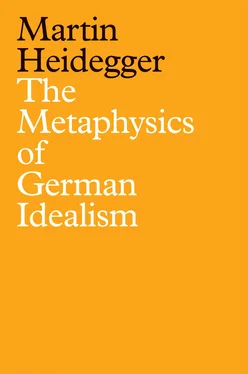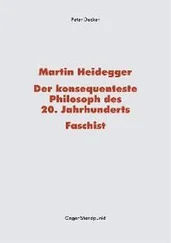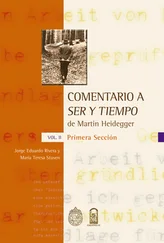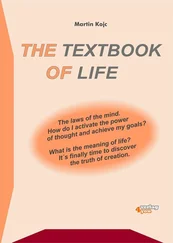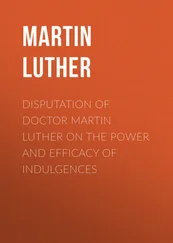Depending on how human freedom in its essence belongs to this nexus or even determines it, the treatise on human freedom either is an isolated and separate reflection or comprises the “innermost centerpoint of philosophy …” (Preface 1809, p. VIII).
The treatise goes into the center of the system as the “ system of freedom. ”
In his Berlin lectures on the history of philosophy, Hegel also dealt with Schelling’s philosophy – he calls it “the latest interesting, true shape of philosophy.” He assesses the Freedom Treatise in particular as follows:
Schelling published a separate treatise on freedom that is of a profound, speculative character, but it stands apart and for itself; in philosophy, nothing that stands apart can be developed. 6
To what extent Hegel’s assessment is mistaken, to what extent it hits the mark, this can be gleaned already from the precise elucidation of the title. What stands “apart and for itself” here in this treatise is the center of the system, that is, it does not stand apart. Quite the contrary, what stands apart in this system is not carried out, above all not in the manner that Hegel demands and has himself actualized. The question must remain open as to what extent Hegel’s demand conforms with and does justice to Schelling’s system.
8
§ 4 The Organization of the Treatise
As typeset, the treatise is, to be sure, organized into segments and paragraphs. At important places we also find remarks on the present state of the investigation; but an explicit table of contents and organization are lacking. We should not let this belie its rigorous internal structure.
We shall begin by providing here the missing table of contents; it can serve as a guide to a first understanding.
On the Question of System in General and the Question of the “System of Freedom” in Particular by Way of the Clarification of the Concept of “Pantheism”
Primary Investigation (middle of 357 – beginning of 415)
1 The Inner Possibility of Evil (middle of 357 – beginning of 373)
2 The General Actuality of Evil as Possibility for Particular Evil (373 – beginning of 382)
3 The Process of Particularization of Actual Evil (382–389)
4 The Shape of Evil Appearing in the Human (end of 389 – middle of 394)
5 The Justification of God’s Divinity in View of Evil (394–399)
6 Evil within the Whole of the System (399 – beginning of 406)
7 The Highest Unity of Beings as a Whole and Human Freedom (406 – beginning of 415)
9
Concluding Remark (415/416)
On the Only True System
From the basic contents of the primary investigation and its trajectory, it becomes clear that the Freedom Treatise is a treatise on “ evil. ” Thus, “human freedom” and “evil” must be essentially connected; and this connection must essentially determine how beings stand together as a whole – the system.
§ 5 Brief Excursus on a Further Misgiving (the Historiographic – the Current – That Which Has Been)
In reflecting on what is treated in the Freedom Treatise, we find our way into essential relations to that which “is”; or, better put, we experience that and how we “are” in such relations. We experience and consider that which “is.” Fine; but what merits the distinctive designation: it “is”? What is called “being”?
This chair over there – “is.” Is that which “ is ,” in the manner of the chair? With this, do we have a yardstick for measuring what “is”? All sorts of things “are” in such a way; whence the measure of being? Is there a measure here at all? The relation to that which “is,” and even the essential relations: difficult to experience. Wherein lies the ground of the “difficulty”? (the abandonment of beings by being – the forgetting of being by the human)
So, not only, nor first of all, to learn about something or other; not some sort of “instruction” about learned matters. But surely still less a snatching at what is “practically” useful and “germane to life.”
If, however, a reflection on essential relations in which “we” stand – we, here and now – why then a treatise from a bygone age?
Historicism! The making-present of the past – and explaining on the basis of what lies further back in the past { Vor-vergangenen }; flight into a holding onto the past; counting on ways out of the present ; “restoration” – “eschatology”; (the essence of historicism is not mere “relativizing”);
10
Or, alternatively,
Currentism – as its flipside; to settle the past on the basis of its value for the present , and the “future” as the extended “present” (its plans); – “untimeliness” as the fiercest dependence on time; constantly staring at it. Even the relation to the “future” changes nothing if the latter is but the forward extension of the present – indeed of a present in its congealment. (See, for example, Pinder, Essential Features of German Art ). 7The calculative game between “past” { “Herkunft” } and “future” { “Zukunft” } as enslavement to an uncomprehended present; whereby relativism is apparently supposed to be abolished.
Moreover, {see} Schelling himself (see above, p. 3) in the final remark of the treatise.
Nevertheless : not a historiographic and up-to-date explanation of something past, but rather a historical confrontation with what has been { Gewesenem } and thus with what first essences { Wesendem }.
The aforementioned misgiving subsides; but it can also persist { bestehen } – but not for those who under-“stand” { ver-“stehen” } otherwise.
1 1. {TN: i.e., the advertisement about the lecture course made available to students.}
2 2. {TN: For bibliographic information, see § 3 and the relevant note in that section, below.}
3 3. Friedrich Wilhelm Joseph von Schellings sämmtliche Werke, ed. Karl Friedrich August Schelling (Stuttgart and Augsburg: J. G. Cotta, 1856–1861).
4 4. F. W. J. Schelling, Das Wesen der menschlichen Freiheit. (Philosophische Untersuchungen über das Wesen der menschlichen Freiheit und die damit zusammenhängenden Gegenstände, 1809), newly edited with an introduction, index of names, and index of subjects by Christian Herrmann (Philosophische Bibliothek, vol. 197) (Leipzig: Felix Meiner, 1925). {TN: Translations of Schelling’s treatise come, with occasional modifications, from Jeff Love and Johannes Schmidt’s rendering in F. W. J. Schelling, Philosophical Investigations into the Essence of Human Freedom (Albany: SUNY Press, 2006). This edition also includes the pagination of Sämtliche Werke.}
5 5. {TN: Heidegger writes both Centrum (without italics) and Zentrum. We distinguish them in the translation by italicizing the former. Mitte appears as ‘center.’}
6 6. G. W. F. Hegel, Vorlesungen über die Geschichte der Philosophie, 3 vols. (Stuttgart 1928), p. 682 [XV, 682], Sämtliche Werke, ed. Hermann Glockner, vol. 19. [In what follows, all Hegel citations and references are based on this edition.]
7 7. Wilhelm Pinder, Wesenszüge deutscher Kunst (Leipzig: Seemann, 1940).
Part I Preliminary Reflection on the Distinction Between Ground and Existence
§ 6 The Core Section of the Treatise: The Distinction between Essence Insofar as it Exists and Essence Insofar as it is Merely Ground of Existence
Читать дальше
